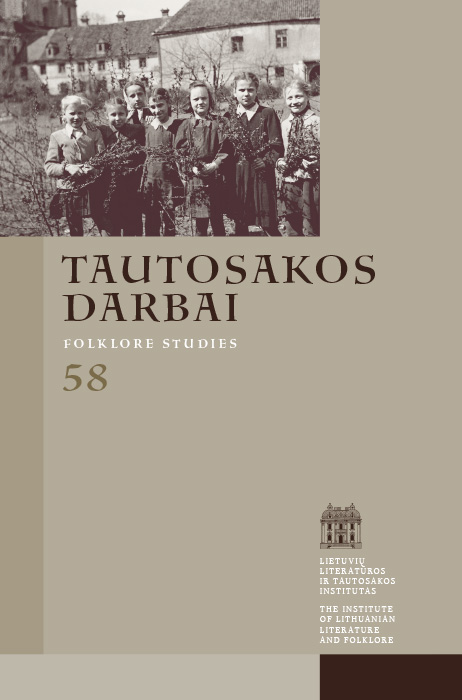Kognitywny obraz WSTYDU na materiale przysłów polskich i litewskich
Santrauka
Niniejszy artykuł stanowi skromny wycinek szerzej prowadzonych badań w zakresie konceptualizacji uczuć wstydu, strachu i gniewu w języku litewskim. Celem artykułu jest ukazanie sposobów rozumienia pojęcia WSTYDU, tkwiących w przysłowiach dwu odrębnych, lecz bliskich sobie kulturowo wspólnot – polskiej i litewskiej. Celowi temu służy rekonstrukcja kognitywnego obrazu wstydu w myśl zaproponowanej przez Jerzego Bartmińskiego metodologii S-A-T, w oparciu o dane pochodzące ze słowników ogólnych języka polskiego i litewskiego oraz przysłów, wyekscerpowanych ze zbiorów przysłów w oparciu o klucz pojęciowy i leksykalny. Pierwsze służą naszkicowaniu jądra semantycznego badanego pojęcia. Drugie zaś odzwierciedlają jego potencjał tekstowy, dając wgląd do ludowej konceptualizacji pojęcia. Tak więc rekonstrukcję obrazu uczucia wstydu na podstawie przysłów polskich i litewskich stanowić będzie przegląd definicji słownikowych leksemów składających się na pojęcie WSTYDU, a następnie analiza semantyczna przysłów te wyrazy zawierających. Zwieńczeniem badania będzie próba przedstawienia kognitywnego obrazu WSTYDU w języku polskim i litewskim.
Kognityvinis GĖDOS vaizdas lietuvių ir lenkų kalbų paremijose
Raktažodžiai: kognityvinė definicija, gėdos konceptas, etnolingvistika, paremija.
Straipsnyje pateikiama pykčio, baimės ir gėdos jausmų konceptualizacijos lietuvių kalboje tyrimų ištrauka. Siekiama parodyti gėdos suvokimo ir vertinimo būdus, glūdinčius dviejų skirtingų, bet itin viena kitai artimų, lietuvių ir lenkų kalbinių-kultūrinių bendruomenių sąmonėje. Iškeltam tikslui pasiekti taikomas lenkų kognityvinės etnolingvistikos pradininko Jerzy’io Bartmińskio pasiūlytas objekto kognityvinio vaizdo rekonstrukcijos – S-A-T metodas, empirine medžiaga pasirenkant leksikografinius duomenis bei leksiniu ir semantiniu pagrindu parinktas paremijas. Žodyniniu medžiagos tyrimu atkuriamas gėdos sąvokos semantinis branduolys ir kitos susijusios sąvokos, tuo tarpu paremijų semantinės analizės rezultatai atspindi pastarosios tekstinį potencialą, atskleidžiant gėdos jausmo liaudiškosios konceptualizacijos ypatumus. Straipsnyje pirmiausia aptariamos žodyninės gėdos ir kitų glaudžiai su ja susijusių jausmų definicijos, atkuriamas leksinis-semantinis tiriamos sąvokos laukas, o paskui nagrinėjamos paremijos. Analizės išvadose pateikiama gėdos sintetinė definicija, atkreipiant dėmesį į lietuvių ir lenkų paremijose slypinčius jos suvokimo panašumus ir skirtumus.
